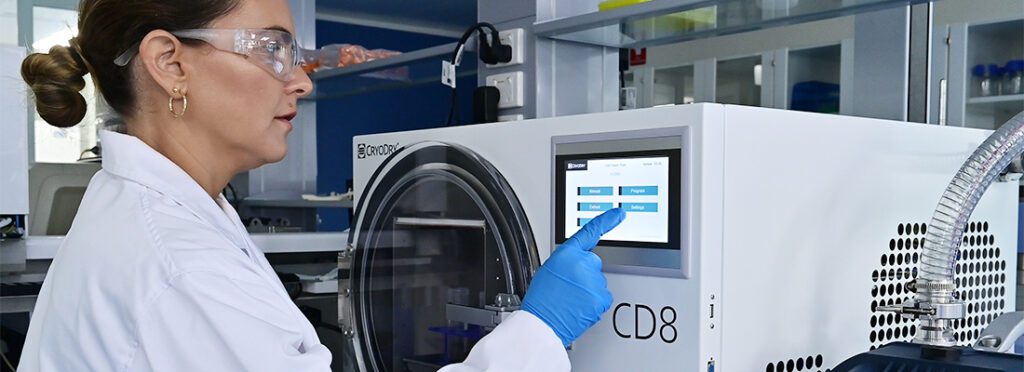Info, Knowledge Base
How important is product freezing in the freeze-drying process?

Freeze drying, also known as lyophilization, is a process that is used to preserve a wide range of products, from food to pharmaceuticals. The process involves freezing the product, then removing the frozen water or other frozen solvents through sublimation. While the drying process is important, the freezing process is equally important in ensuring the quality and preservation of the final product.
Statements often made by customers such as “I just wait till it looks frozen on the shelf”, “I leave it in the freezer overnight” or “I am in a hurry, so I use liquid nitrogen” might be short-cuts but it is important to remember that the speed and temperature at which the product freezes greatly affects the way it dries. Good freeze drying starts with optimization of freezing parameters.
Fully freezing the product before moving to primary drying is crucial. It is important that the product is fully frozen before applying vacuum, as failure to do so can cause unfrozen product to boil, which can negatively impact the final product quality. To ensure the product is fully frozen, you need to know the temperature at which it freezes, which may be lower than the point at which it appears to be solid. Many formulations can contain multiple elements which create complex and unpredictable freezing and drying behaviour.Freezing is not a linear process and the freezing temperature is a critical parameter that you need to know.
It is also important to understand the concept of supercooling. Supercooling occurs when the product temperature goes below the freezing point, but no nucleation has occurred yet. Nucleation is the point at which the product actually begins to freeze, and it is an exothermic event. This means that heat is released as the product freezes, which can affect the product quality. By understanding and controlling supercooling, users can ensure that the product freezes at the correct temperature and in the correct manner.
Freezing speed also impacts the ice crystal structure. Large ice crystals create an open structure with large paths through which vapour can escape, while smaller crystals give rise to narrower vapour paths leading to longer drying times. A general rule is that fast freezing (using liquid nitrogen) results in small crystals, while slow freezing results in larger crystals. However, it is important to note that large crystals can damage biological products. The ideal crystal structure and cooling rates will vary depending on the product. It’s essential to have knowledge of your product characteristics and needs in order to optimize the freezing process.
Additionally, the ability to vary the shelf temperature during freezing allows the user to control the crystalline structure. Annealing, the process of cooling and warming a product, can be used to produce a more favourable ice crystal

